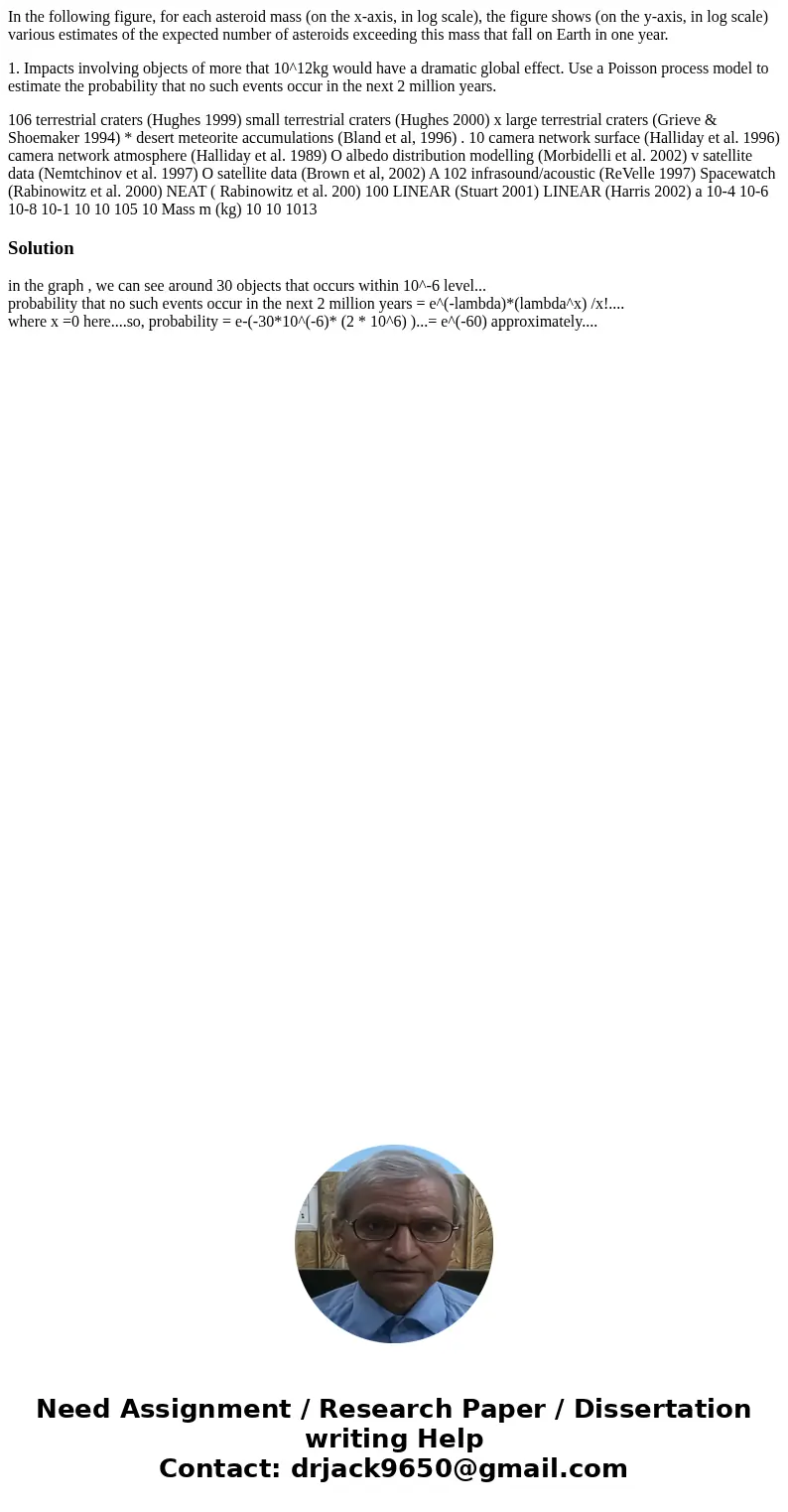In the following figure for each asteroid mass on the xaxis
In the following figure, for each asteroid mass (on the x-axis, in log scale), the figure shows (on the y-axis, in log scale) various estimates of the expected number of asteroids exceeding this mass that fall on Earth in one year.
1. Impacts involving objects of more that 10^12kg would have a dramatic global effect. Use a Poisson process model to estimate the probability that no such events occur in the next 2 million years.
106 terrestrial craters (Hughes 1999) small terrestrial craters (Hughes 2000) x large terrestrial craters (Grieve & Shoemaker 1994) * desert meteorite accumulations (Bland et al, 1996) . 10 camera network surface (Halliday et al. 1996) camera network atmosphere (Halliday et al. 1989) O albedo distribution modelling (Morbidelli et al. 2002) v satellite data (Nemtchinov et al. 1997) O satellite data (Brown et al, 2002) A 102 infrasound/acoustic (ReVelle 1997) Spacewatch (Rabinowitz et al. 2000) NEAT ( Rabinowitz et al. 200) 100 LINEAR (Stuart 2001) LINEAR (Harris 2002) a 10-4 10-6 10-8 10-1 10 10 105 10 Mass m (kg) 10 10 1013Solution
in the graph , we can see around 30 objects that occurs within 10^-6 level...
probability that no such events occur in the next 2 million years = e^(-lambda)*(lambda^x) /x!....
where x =0 here....so, probability = e-(-30*10^(-6)* (2 * 10^6) )...= e^(-60) approximately....

 Homework Sourse
Homework Sourse